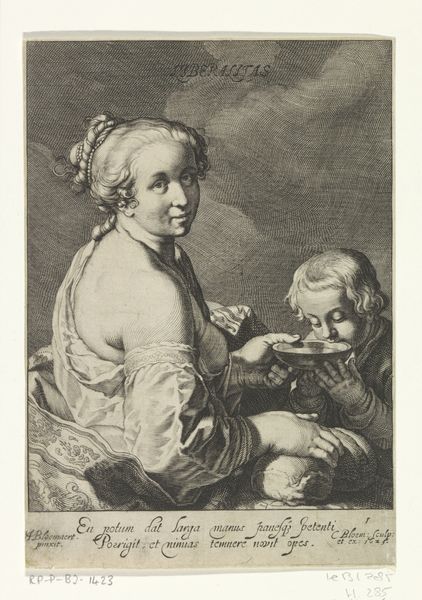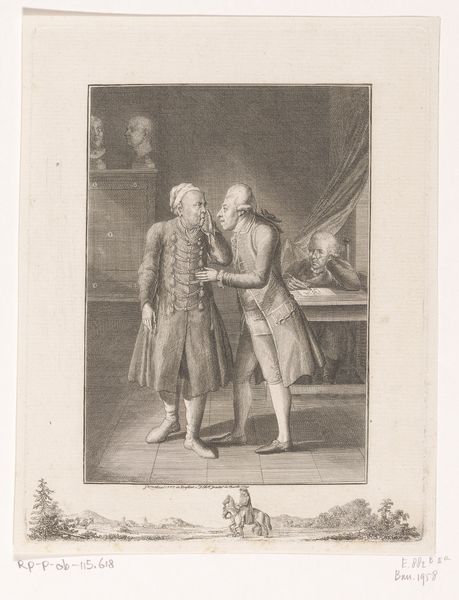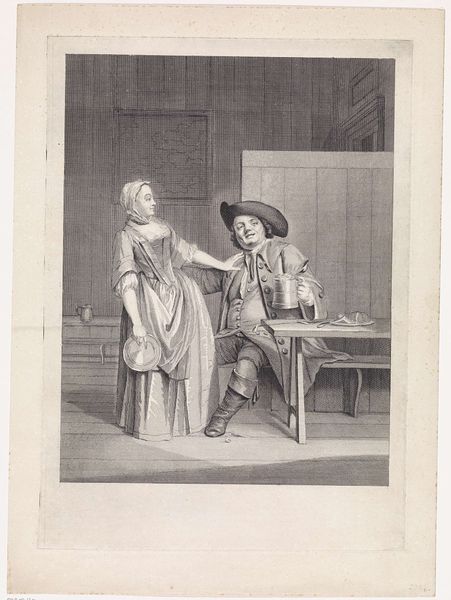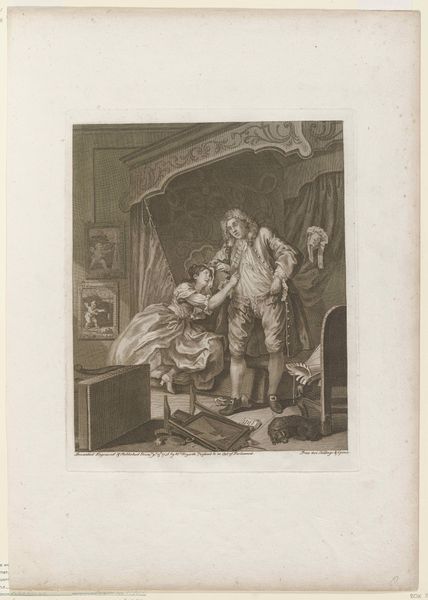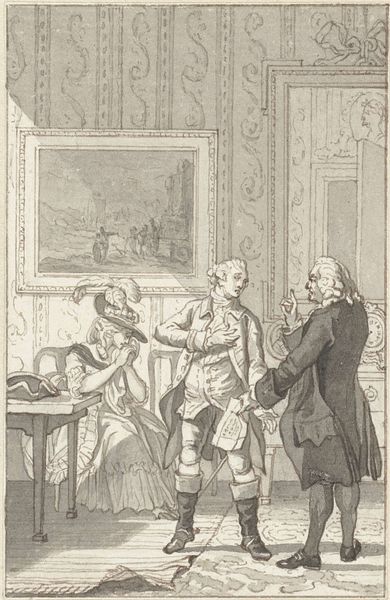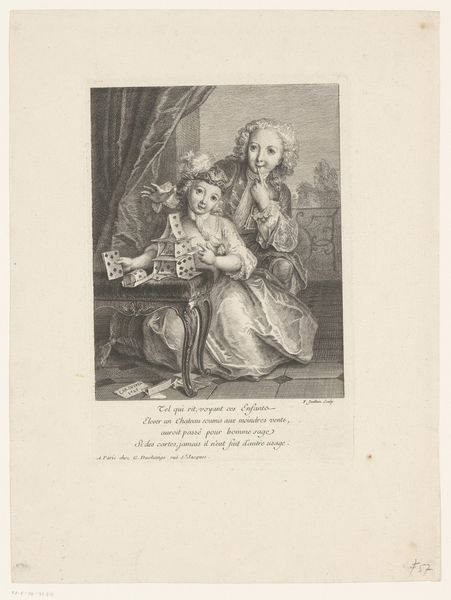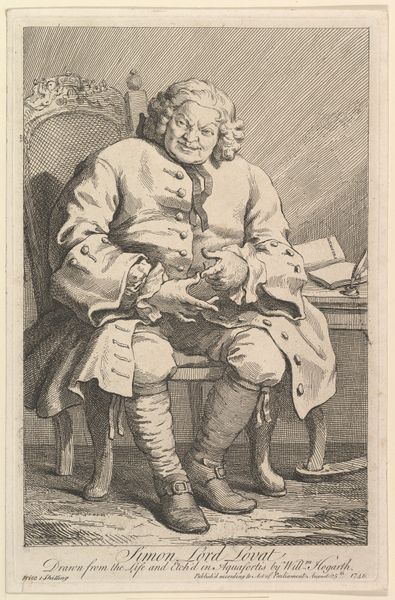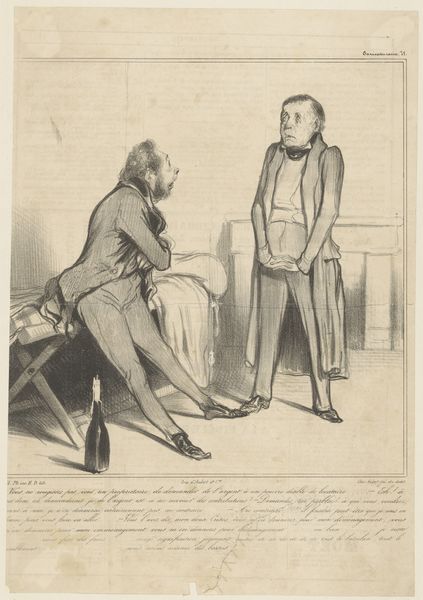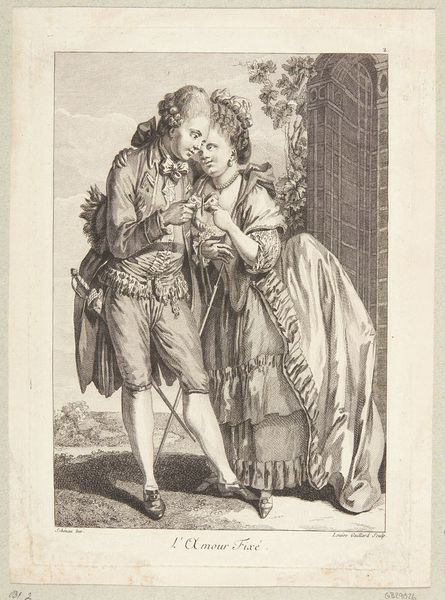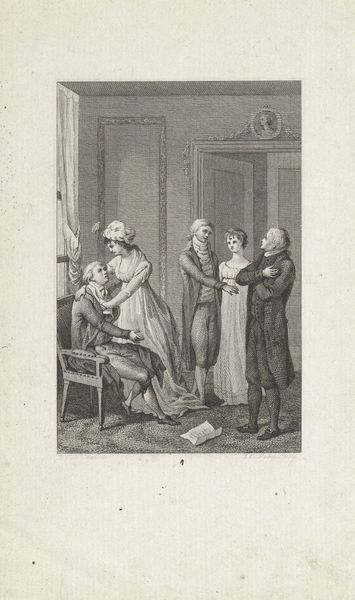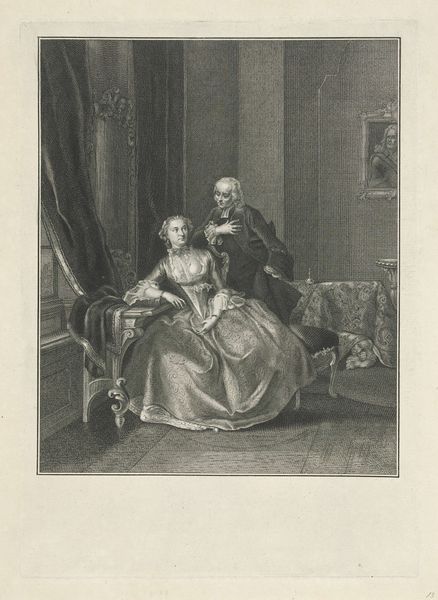
drawing, print
#
portrait
#
drawing
#
baroque
# print
#
figuration
#
genre-painting
Dimensions: plate: 5 7/16 x 4 1/16 in. (13.8 x 10.3 cm)
Copyright: Public Domain
Editor: We're looking at "Young Couple with Flute & Cittern," a drawing by Johann Gottlieb Glume, created sometime between 1725 and 1778. There's a kind of stiff formality to the scene that strikes me. What do you see in it? Curator: Well, seeing this print, I'm drawn to consider the context of its creation. The print, like other Baroque works, served as a social mirror, reflecting idealized scenes of upper-class life, emphasizing leisure and cultivation as social values. It suggests a particular moment in the social history of music and art appreciation. Editor: So it’s less about capturing reality and more about promoting an idea? Curator: Exactly. Notice how the tools of leisure – the flute, the cittern, even what seems to be a racket – are carefully positioned. It implies a level of affluence where artistic and recreational pursuits were cultivated. How does the portrayal of gender roles strike you? Editor: Interesting point, the woman appears standing, seemingly overseeing the man with his musical instrument, yet neither seem to interact much. Does the placement hold symbolic meaning in Baroque society? Curator: It’s likely commenting on the established hierarchy and gender dynamics within that social sphere, reinforcing these ideas for the print’s intended audience. Are the roles naturally reflected, or carefully staged in terms of the period it emerged? Editor: So understanding art of this era also involves deciphering how power and social structures were visually encoded? That's fascinating, it seems there is so much more to art than personal enjoyment. Curator: Precisely! It’s about revealing the mechanisms of influence. Understanding artwork of this type helps appreciate art’s important public role in promoting an idealized point of view.
Comments
No comments
Be the first to comment and join the conversation on the ultimate creative platform.
